Is My Backyard Becoming a Zoo?
Blame it on Little Red Riding Hood but I have always had a deep concern about any animal with teeth longer than mine! And while I expect to see potentially problematic wildlife in remote rural areas or national preserves, it is very unnerving to see them in my backyard.
Backyard, you say!?? One day in April, 2020 my husband was looking out our kitchen window and called out to me, “There’s a big dog loose in the backyard.” Quickly checking it out and concerned as to how to deal with it, I initially thought it was a German shepherd. Snapping several photos, we eyed each other from a comfortable distance until the animal vanished into a neighboring yard.
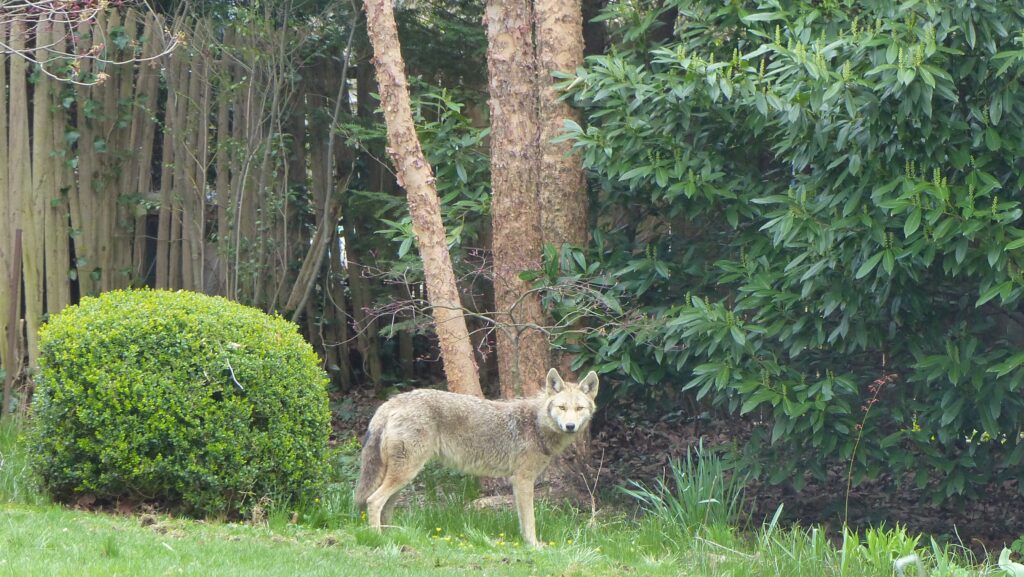
The animal identification did not seem quite right and, indeed, that was no German shephard. It was actually a coyote!
Stealthy Arrivals
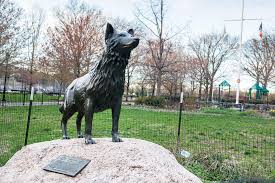
I must admit that I have heard vague rumors about coyote sightings over the years but, while intrigued, never looked into it. Now, going through back issues of the Riverdale Press, I have found reports going back to 2009.
Indeed there is even a statue at the southwest entrance to Van Cortlandt Park commemorating the 1995 first confirmed sighting of a coyote in NYC since 1946. That coyote was killed while trying to cross the Major Deegan Expressway. Coyotes are believed to live in Van Cortlandt Park and Riverdale Park. It seems that they had already been seen in Woodlawn Cemetery in 1994 but not reported. Since then coyotes have be found throughout New York City and are now permanent residents of Long Island.
The statue was the brainchild of Ricardo Hinkle, a landscape architect for the Parks Department. The Modern Art Foundry in Astoria, Queens hired Glenn and Diana Hines to do the actual work.
While we have generally been oblivious to the coyotes’ arrival, there is research group devoted to their present circumstances – Gotham Coyote founded in 2010. “This (group) is a collaboration of researchers, educators and students from institutions around the region working together to better understand coyotes and their role in our urban ecosystem.” In fact, Wave Hill has participated through its Woodland and Ecology Mentorship program in trying to establish a count of animals.
Coyotes Have Many Relatives
The name of this mammalian family – Canidae – is derived from the Latin canis meaning dog. In addition to the coyotes (Canis latrans), canids include our domestic dogs (Canis lupus familiaris), wolves(Canis lupus), jackals (Canis aureus), foxes(Canis aureus ) and dingoes (Canis lupus dingo), 34 species altogether, spread over 13 genera. The smallest canid, at three pounds, is the fennec fox (Vulpes zerda) of north Africa and the largest is the gray wolf (Canis lupus) native to North America and Eurasia, which can reach 175 pounds.
The Canidae appeared in North America during the end of the Eocene epoch which ran from 37.8-33.9 million years ago and they reached Eurasia in the Miocene (23-5.3 million years ago. They seemed to have evolved in North America and migrated first through the Bering land bridge linking North America with Asia; later family members migrated to South America during the late Pliocene (5.3-2.9 MYA) when the Isthmus of Panama appeared. It is hypothesized that the Bering land bridge emerged during Earth’s cold cycles when sea level fell as its waters were locked up in glaciers. The creation of the Isthmus of Panama is a much more complicated one involving tectonic processes of plate movement and volcanism.
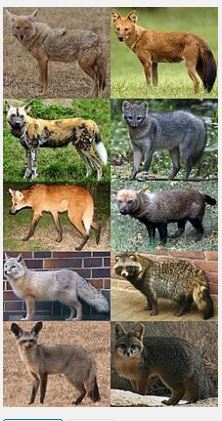
Diet
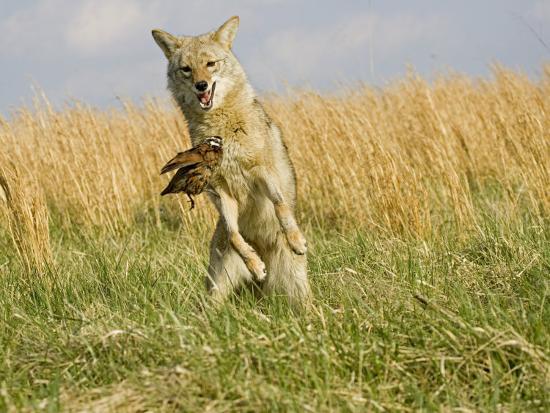
Coyotes were not native to the eastern United States but they began to spread out as the gray wolf was hunted down thereby allowing them to become the top predator. They are very adaptable animals and, fortunately for us, are not particularly interested in urban garbage. Their natural diet is extremely varied and can change with the seasons as different options become plentiful. This information is clearly evident by examining their scat.
.
So what is scat? In fact, it is fecal material deposited by an animal for the usual reasons or to help mark territory. While not very esthetic to us, it is useful in several ways. Shape of scat is indicative of the animal that excreted it. In addition, when examined carefully, scat tells us what the animal ate. Photos taken in Texas from October through December show a monthly progression of available diet. Early October scat was full of grasshoppers, mid-October showed grasshoppers, seeds and animal fur, early November showed vegetable remains, while later in the month they contained mesquite seeds and seed pods. By end December, the feces were filled with fur indicating that the diet was then including small mammals.

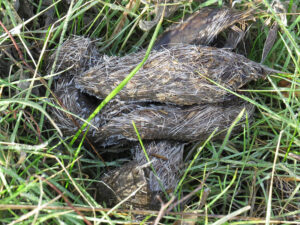
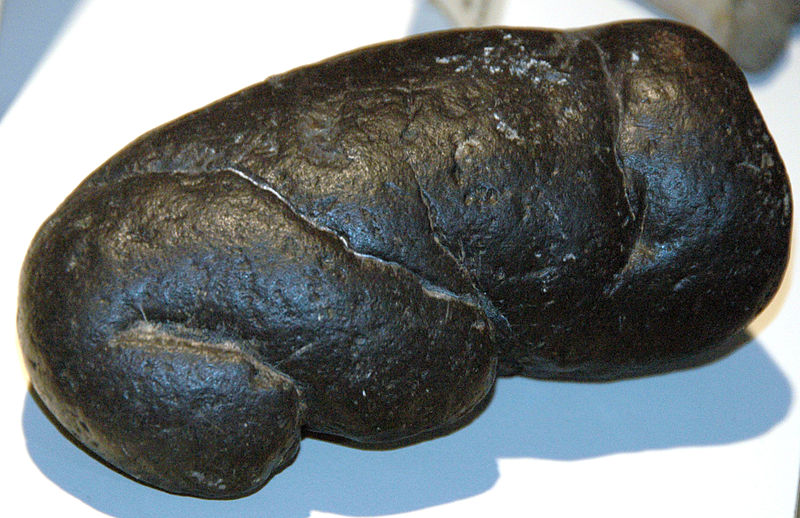
Incidentally, coprolites are fossilized dung and are likewise useful to enlighten us as to the diet of ancient animals. A clue that a fossilized find is indeed a coprolite and not some kind of mineral look-alike (called a pseudocoprolite) is the inclusion of plant or animal parts.
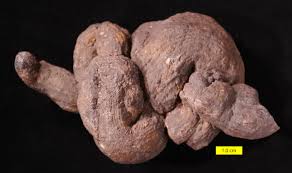
Daily Life
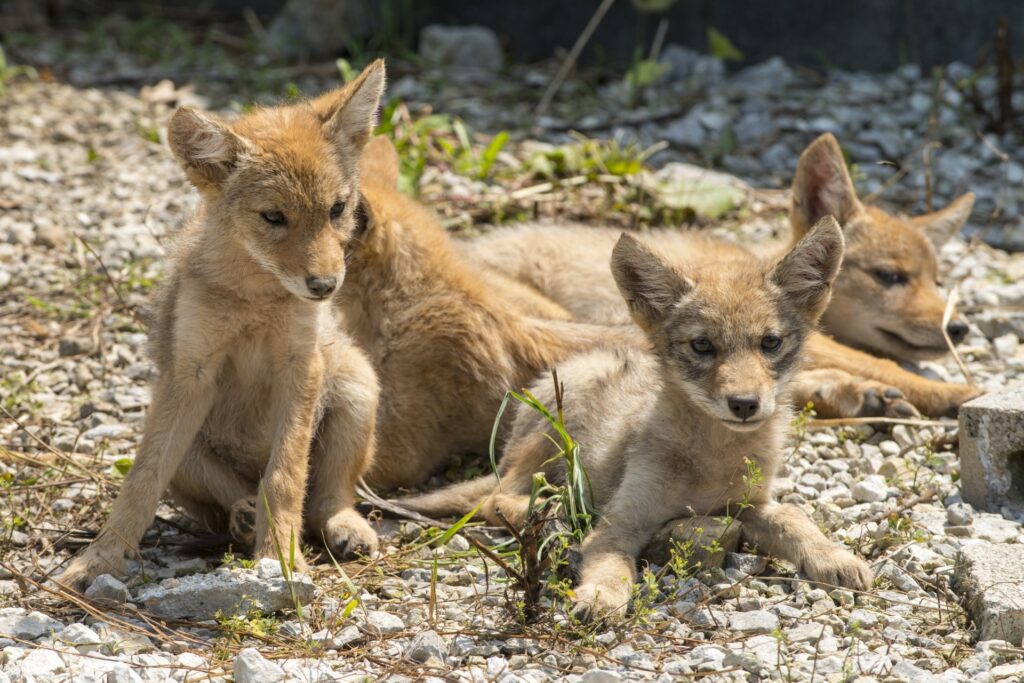
Coyotes are not strictly nocturnal and may be seen during daylight hours. They do not live in packs like wolves do but rather, lead their adult lives as couples since they mate for life. Gestation lasts about 62 days after successful mating, which occurs in January, so that birth usually takes place in March /April. The 4-6 pups in the litter are weaned at 5-7 weeks and will stay with their parents becoming more independent with time. As they become adult in their first year they are dispossessed by the parent couple between October and January and are, thereby, forced to find their own mate and an empty territory where they can live and breed.
Territory size varies considerably. In rural areas, breeding pair density runs from 1-2.5 pairs per 10 square miles. In natural areas in a suburban settings density increases to 4.5 breeding pairs per 10 square miles with the home range per pair ranging from 0.5-5.4 square miles (average size of 2.2 square miles).
Total population numbers in New York State are not completely clear. Chris Nagy of Gotham Coyote shared this information: “ In NYS (New York State) the DEC(Department of Environmental Conservation) thinks there are between 20,000 and 30,000 coyotes across the whole state. In NYC, we think there are likely around 20. That number oscillates a lot, as they can have a lot of pups but most of those die or emigrate after leaving their parents. There are also likely a good number of coyotes that come and go from Westchester, traveling back and forth as they look for new territories, mates, etc. More useful, I think, is the number of permanent territories that are ‘held’ by a breeding pair, i.e., representing coyote families. We know of 4-5 breeding families in the whole City, with a few sites that have just one individual living by themselves. That’s where I get the guesstimate of 20 from: 4 to 5 pairs, plus pups or juveniles that haven’t left yet, plus a couple more ‘wanderers.
How to View our Coyotes
The burning question meanwhile is, “How safe is it to have a large predator in relatively close association with people?” Coyotes are omnivores and will eat fruit, small mammals, birds and deer. The real problem involves the issue of small mammals placing small children and pets at risk. However, it is recommended never to leave food around – even if it is for other animals such as feral cats – or to ignore the fact that these animals will hunt. Hazing – referring to making noise or disturbances – is a way of keeping them from habituating to our human presence. Check out the YouTube video on the subject.
All that being said, coyotes are predators and “the Environmental Conservation Law allows ‘problem coyotes’ to be killed. Section 11-0523 says coyotes that are “injuring private property may be taken by the owner, occupant or lessee… at any time in any manner. “The proper wildlife officials can be contacted at: wildlife@dec.ny.gov. Alternatively, there is a list of Bronx Licensed Nuisance Wildlife Control Operators.
I am ambivalent about our local coyotes. On the one hand anything that eats rabbits and doves is not all bad. On the other hand, I would rather not encounter a predator – even a shy one – in my own back yard!
If you have enjoyed this blog, you might enjoy my book A Habit of Seeing: Journeys in Natural Science.
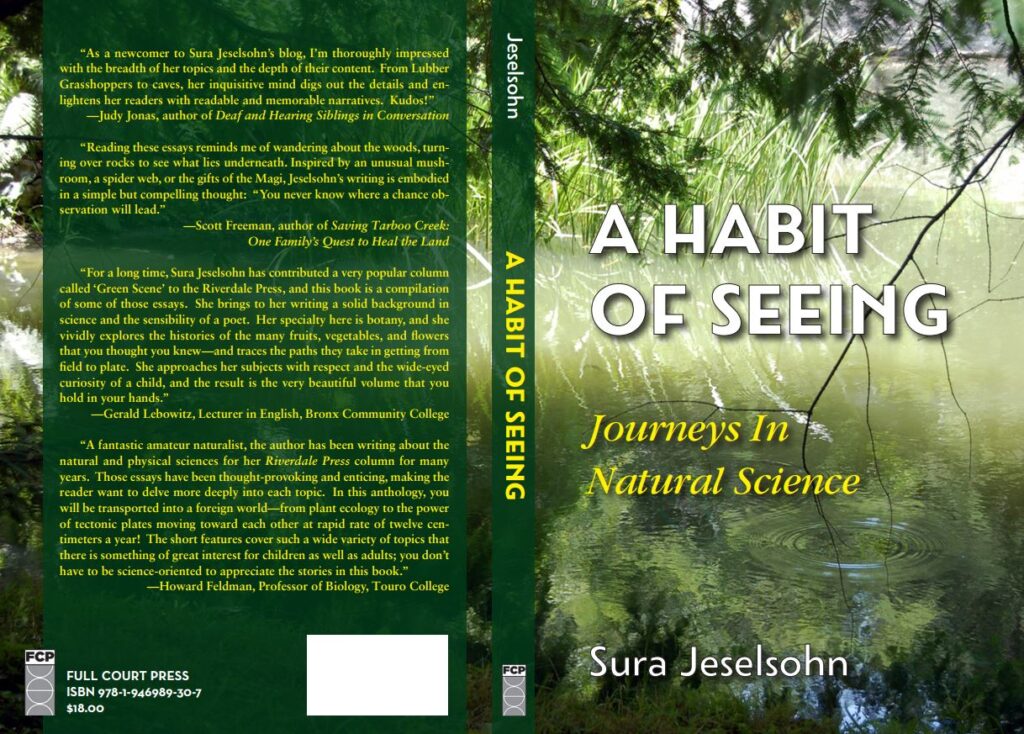
Thanks Sura
It might be good to mention that the determination of whether a particular coyote is a “problem” is not one that in most cases can be made solely by the landowner. In other words, if a landowner wishes to remove a coyote (or any regulated species they must apply for a nuisance wildlife removal permit from the DEC which requires documentation of why the coyote should be removed.
‘Regulated’ refers to any species where the species has a NYS hunting season, or is protected or regulated by the state or feds in other ways, eg, an endangered species.
In the case of coyotes, if there is actual damage occurring then it can be removed. But the possibility of damage, or perception of a threat, are not legitimate reasons to put down an animal, and if someone wants to do so they have to get approval from the state.
Nor is it legal to ‘relocate’ animals, so again, any contractor that tells you they can do this is lying or will be breaking the law when they actually do it. The theory behind this is that people are not allowed to frivolously remove protected wildlife they do not care to have around; only animals that are causing legitimate problems can be removed. Thus any animal that is legally removed is a problem animal, and to then allow the release of a problem animal to become a problem for another community would be bad practice. In addition, most relocated animals die either of starvation or through conflict with the resident conspecifics in the area they are released into. Another danger is the spread of disease.
So if someone is uncomfortable with the wildlife in their backyard, they should balance that with any possible discomfort in their conscience that if they have it removed it will be killed. Or it will be released by an unprofessional contractor breaking the law and most likely suffer a worse death and cause ecological disruption wherever it is released. It does not happen too often, but several times here managing a nature preserve, we have had to chase off wildlife control contractors trying to dump 20, 30, 50 raccoons into our forest.
In some cases DEC grants permits to agencies, rehabbers, or researchers to release animals, but these tend to be animals that are not problems but were in captivity for some reason (injured and properly nursed back to health, for example).
Here is a list from the DEC of which species you need removal permits for at varying levels of nuisance or damage:
https://www.dec.ny.gov/animals/81531.html#3
Sura’s book is a treat for those of us who are not schooled in science and want to have our eyes opened for the beauty of nature around us: rocks, trees, bushes, flowers, insects, birds and other gifts nature has to offer. Her writing is clear and easy to read, yet leads us to local and far off sites we would have otherwise overlooked. Do read her book – you’ll have a new pair of eyes.
Please ID the ten Canids picture. Years ago, I was entering the HHPkwy S from Riverdale Avenue S, where there’s a big chunk of hill on right of entrance ramp. Atop the hill, standing like a king claiming the territory, was a very husky, furry coyote. I stopped to stare. He stared back unmoved. It be before the days of smartphones with cameras. I was tempted to get out of my car and approach.
Does anyone actually know the population of coyotes in Van Cortlandt Park?
I live in Woodlawn and there have been local sightings of coyotes consistently over the last 4-5 years, walking in our streets late at night.
But, on the other end of it I have noticed a greatly diminished wildlife population in my area – I used to always see opossums, skunks and raccoons every spring, summer, fall. Just a few – but for 2 years now nothing, and it is the same for my neighbors. So, I am wondering if the coyote population, newish to the park, has been feasting on the other small wildlife in the park? What could be tastier than a baby skunk?!
I would like a study of the current coyote population in VCP so we can have some idea as to how many are there and if there are too many to let other wildlife survive? After all, we don’t want just coyotes to reach maturity.